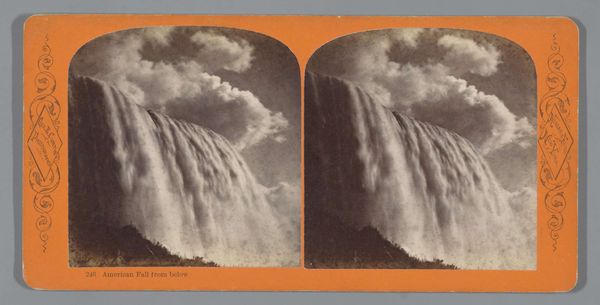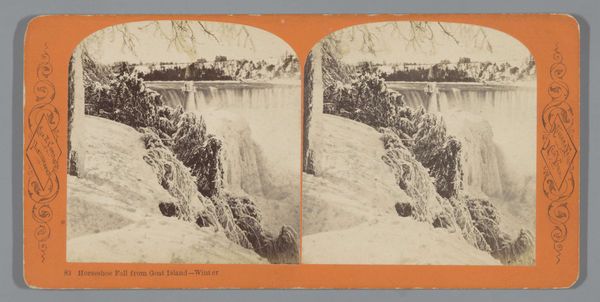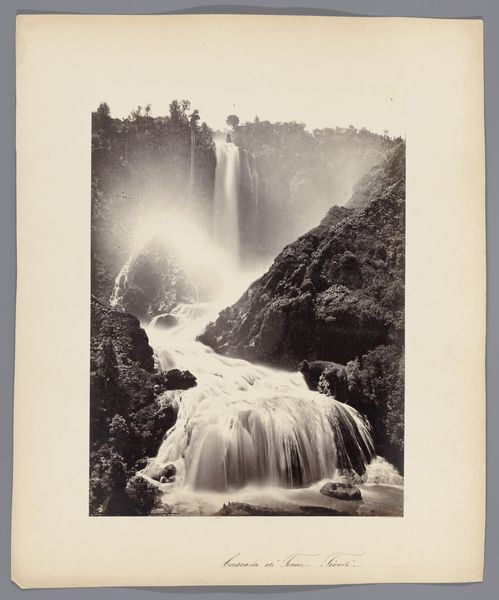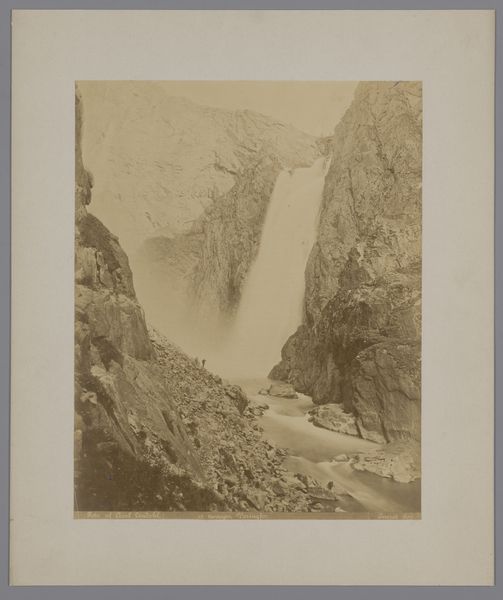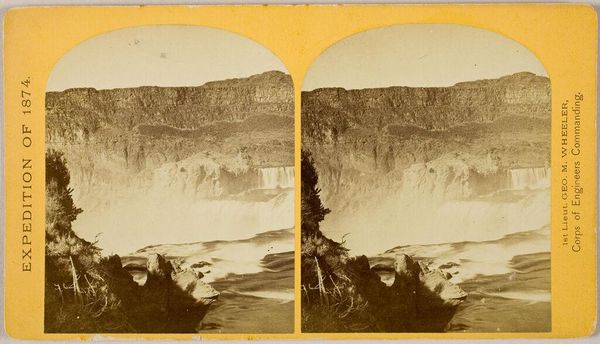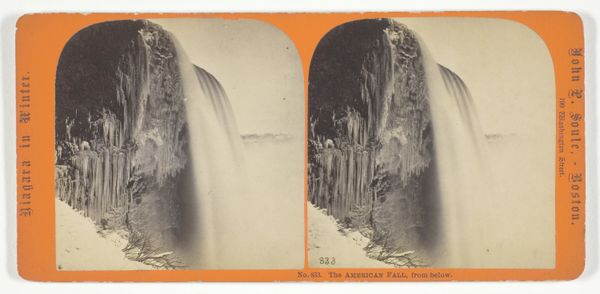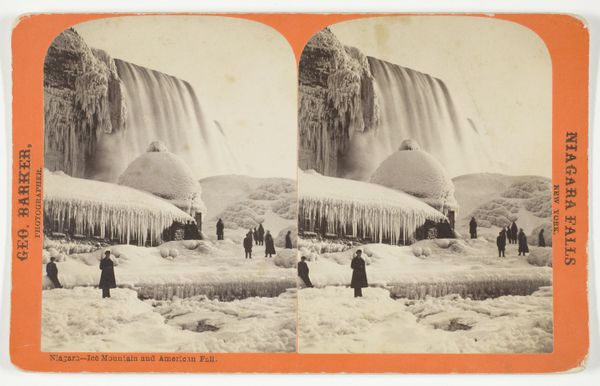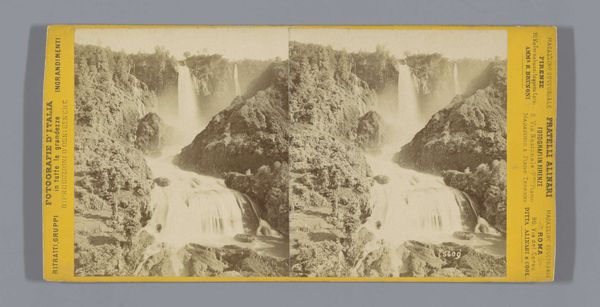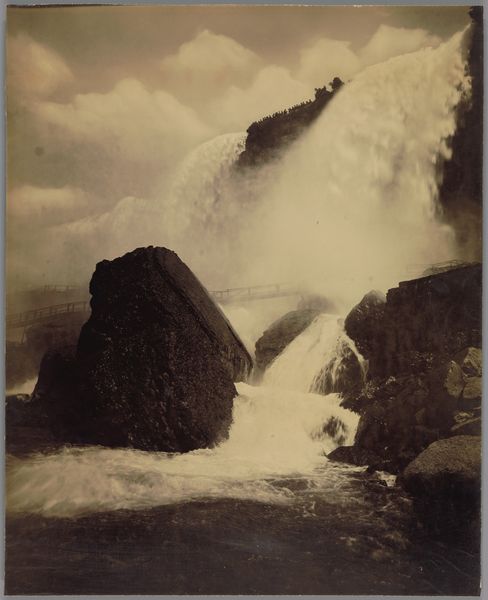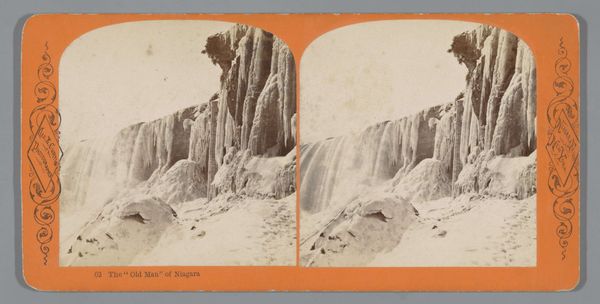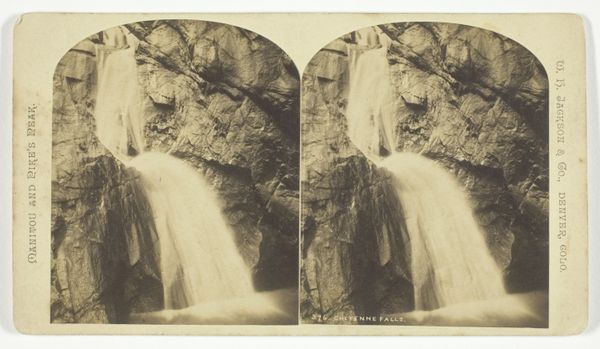
print, photography, gelatin-silver-print
#
16_19th-century
# print
#
impressionism
#
landscape
#
photography
#
gelatin-silver-print
Dimensions: 7.8 × 7.4 cm (each image); 8.6 × 17.5 cm (card)
Copyright: Public Domain
Curator: At first glance, this work really evokes a sense of serenity—the cascading water captured with such stillness. Editor: Indeed. This is "Sunset, Horseshoe Fall - Niagara," a gelatin silver print by George Barker, likely produced between 1850 and 1894. It's part of the Art Institute of Chicago's collection. Curator: I'm immediately drawn to the texture. The smooth water contrasts with the rough, dark rocks. Barker really plays with the contrasts within a monochromatic scale, creating a scene that is both grand and somehow intimate. Editor: It is quite striking how Barker photographs Niagara Falls. During the late 19th century, images of Niagara were frequently commissioned as tools for commerce and expansionism; Barker’s lens and technical proficiency allowed him to take promotional pictures. Curator: Ah, so this picturesque vision of Niagara was actually functioning as advertisement? Editor: Partially, yes. These images helped create and shape the mythic narrative around Niagara as a natural wonder—a commodity ripe for touristic consumption, even exploitation. Curator: That commercial framing provides an interesting counterpoint to my initial feeling. Thinking about the implications for native land usage and what it means to render nature into a 'resource'... It challenges the immediate aesthetic pleasure one experiences. Editor: Precisely. Even the technique—the gelatin silver print—speaks to a shift towards mass reproducibility and widespread circulation of images. It allowed Barker to meet the growing demand for such depictions of Niagara. Curator: Looking at it again, I can see that tension. The beauty is undeniable, but it is overlaid with a layer of industrial and capitalist intent. The framing transforms a sublime experience of nature into something readily consumable. Editor: Absolutely, and understanding the socio-political backdrop adds significant depth to how we view Barker’s accomplishment. Curator: It gives me a more complete view of what I’m seeing. It really encourages you to contemplate the complicated connections between art, culture, and history.
Comments
No comments
Be the first to comment and join the conversation on the ultimate creative platform.
